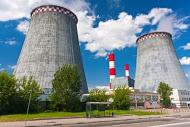
New mathematical equation by Japan group could boost nuclear plant safety
Also medical management of a particular syndrome.
The safety of nuclear plants, as well as the medical management of acute radiation syndrome, could soon be dramatically improved thanks to a new mathematical equation developed by Japan’s Nuclear Safety Research Centre.
According to a release from Taylor & Francis Group, a recent study on the behaviour of nuclear fuels in atomic blasts, published in the Journal of Nuclear Science and Technology (Taylor & Francis), suggests a formula that offers a rigorous yet straightforward way to measure the impact of radioactive emissions on humans.
As accurate as complex kinetic calculations, yet devoid of all their numerical intricacies, it promises to be a highly effective tool for the planning of safer nuclear facilities, as well as for the safeguard of individuals.
Here's more from Taylor & Francis Group:
Yuichi Yamane states that ‘In a criticality accident, the first peak power is useful and important information to estimate the scale of the accident and employees' dose of direct radiation from the fissions in the nuclear fuel.’
There is no doubt that the safety of nuclear energy is a highly divisive issue, with the wellbeing of those living in the proximity of atomic plants being at the core of the controversy.
Scientists have strived to improve the performances of reactors at critical times and developed a series of complex calculations to analyse them with precision. However, to set the parameters for these computations, a high level of knowledge of nuclear disasters is required.
This study aims to develop a measuring tool neither dependant on China syndrome expertise nor on elaborate arithmetic. ‘Such method can make it easy to design shields against radiations and to perform a safety review of fuel facilities, in addition to the planning of evacuation zones’, adds the author.
While leading scientists have announced that nuclear power is the greenest form of energy, Japan is holding off on reopening its plants in the anniversary of the Fukushima disaster and Germany has recently announced the closer of its reactors by 2020.
So what does the future hold for atomic power? Thanks to this study, it could be safer than expected.























 Advertise
Advertise








